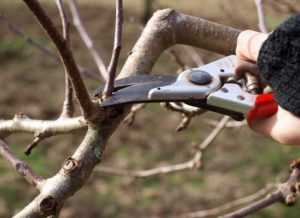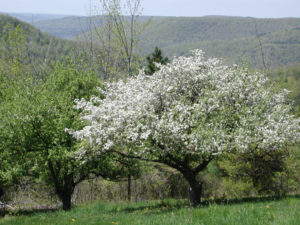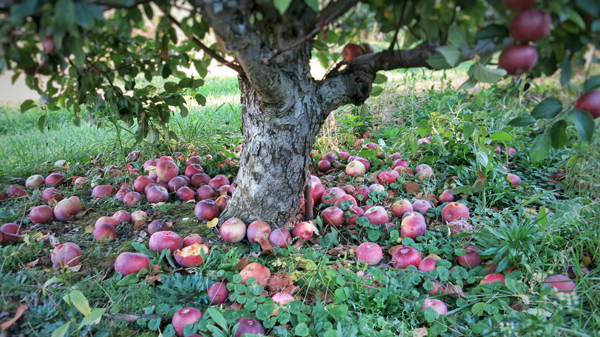OK, the Super Bowl is ancient history and it’s a little early to hunt sheds, so what to do on a winter’s afternoon? Grab a saw and head for the woods! Late winter is the perfect time to ensure you will have a hot spot to hunt whitetails next fall, so it’s time to take care of your fruit trees so they will return the favor next fall. If you spent a lot of time in the woods last fall, you probably ran upon more than a few fruit trees in your hunting area. They pop up all over the place thanks to wild critters and birds who spread seeds and fertilize at the same time. Wild fruit trees often line fence rows and are commonly found where wooded areas meet open spaces. We refer to trees of this type as “volunteers”.
Releasing
Unfortunately, most volunteers just show up, as Mother Nature planted them and forgot to give them plenty of space to grow. Volunteer fruit trees thrive for a while but they eventually get overwhelmed by competing trees and shrub species. By the time you find them, they often are on the downside of their life cycle as they grow tall and spindly in a desperate attempt to gather sunlight. Eventually they quit producing and give up the ghost or topple over. Overcrowding and overstoring is the number-one enemy of fruit producers in the wild.

A little TLC with a saw on a winter’s afternoon can breathe new life into them and create a whitetail hotspot for years to come. Removing competing trees and shrubs from a 20-30 yard radius of the tree will allow it to gather more moisture and nutrients from the ground and receive much-needed sunlight. Pay particular attention to clearing shade producing trees from the east, west and south side of the tree as that is the direction from which most of the sun will be coming. The tree you are working on will benefit most if direct sunlight is available all day. This practice is commonly referred to as “releasing” for obvious reasons.
Pruning
Your planted fruit trees, as well as your volunteers, will also benefit from a little selective branch removal or pruning this winter. Trimming out all dead and decaying branches will help keep diseases and harmful insects from infecting the rest of the tree. Thinning crowding and touching branches will promote summer air circulation and permit sunlight to reach the ripening fruit. You want a clean cut, not a cut that damages other branches. Don’t remove more than 25-30% of a tree’s living branches during thinning. Spreading your thinning out over a few years is better than one heavy pruning. Whatever you do, don’t put the job off until spring when the sap is on the move and the buds are exploding. A good pruning job is like a good haircut: not a scalping, just a nice “clean up”.
If you own and know how to run a chainsaw, that’s the way to go. Be sure to wear protective leggings, a hard hat, and eye and ear protection. A hand-operated bow saw will get the job done as will pruning saw and lopping shears if you only are dealing with small material. Axes are not only dangerous but make sloppy, disease-inducing cuts.

You can generally release and prune up a fruit tree or two in a winter’s afternoon, and the cuttings will be cleaned up (by the deer) in short order. A well-maintained tree will produce fruit year after year and be used by dozens of wildlife species. Best of all, you now have another sure bet to set up on hungry whitetails.









![The Best Deer Camp Chili [VIDEO] Deer Chili Ingredients, Tomatoes, Chili Spices](/wp-content/uploads/2015/10/Deer-Chili-Deer-Camp-Recipe-218x150.jpg)








![How to Call Elk Early in the Season [VIDEO]](/wp-content/uploads/2016/08/byers003-218x150.jpg)




![Idiots Disturb Hunter: How Would You Have Handled It? [VIDEO]](/wp-content/uploads/2015/10/DSC00110-e1474487693878-100x70.jpg)
![Albino Buck Shocked to Shed His Antlers [VIDEO]](/wp-content/uploads/2015/10/AlbinoDeer-100x70.jpg)